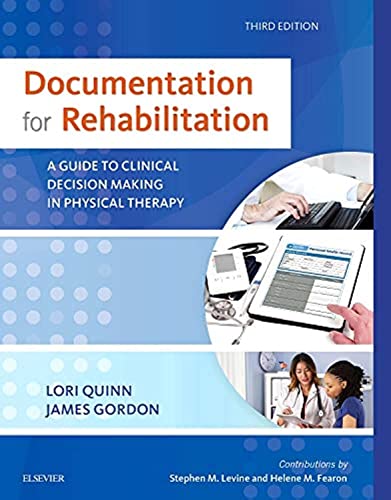Documentation for Rehabilitation
A Guide to Clinical Decision Making in Physical Therapy
Lori Quinn EdD PT; James Gordon EdD PT FAPTA
BOOK REVIEW

In the ever-evolving world of healthcare, where every patient presents a unique puzzle to solve, having a solid foundational understanding of clinical decision-making becomes non-negotiable. Documentation for Rehabilitation: A Guide to Clinical Decision Making in Physical Therapy emerges not merely as a textbook but a beacon guiding physical therapy professionals through the intricate labyrinth of patient care. Authored by the prominent Lori Quinn and James Gordon, this work transcends its pages, echoing the mantra that thorough documentation can not only enhance practice but also genuinely transform patient outcomes.
Picture walking into a bustling clinic where lives are being transformed one session at a time. Therapists are not just interacting with patients; they are deciphering complex stories through words, notes, and assessments. This book, part of their therapeutic arsenal, serves as both compass and map in navigating the ever-challenging waters of rehabilitation. It compels you to understand that every decision made in a therapy session is intricately tied to comprehensive documentation, ensuring not just compliance but an ethical responsibility to patients.
Quinn and Gordon don't shy away from the hard truths-the healthcare landscape demands that practitioners not only know how to treat but also how to communicate their treatment strategies effectively. Their insights delve into the mechanics of clinical reasoning, seamlessly linking the act of documentation to improved clinical reasoning and ultimately leading to superior patient care. Can you feel the weight of that responsibility? It's more than just a task; it's a call to be the best advocate for those who rely on your expertise.
As one reader powerfully articulated, "This book is a game-changer." Such sentiments abound, echoing through numerous reviews where practitioners express newfound clarity in their documentation processes. The authors' clear, concise writing style resonates deeply with readers, stripping away unnecessary jargon and inviting them to engage with the material on a personal level. You aren't just absorbing information; you're incorporating a philosophy of practice that can shape your future decisions.
Yet, it's not without its critiques. Some argue that while the text is rich in theory, it could benefit from more real-world case studies for practical application. The stream of consciousness in some chapters may leave readers longing for more structured examples. However, isn't that the nature of growth? Each piece of feedback only serves to enhance the ongoing dialogue between theory and practice, pushing the boundaries of what we understand about rehabilitation. This interplay is precisely why these critiques should not deter you from diving into this transformative resource.
Moreover, consider the historical context in which this work is produced. In a time when rehabilitation practices are often scrutinized and redefined-especially post-pandemic-Quinn and Gordon position themselves as educators who challenge the status quo. They remind us that documentation is not merely a bureaucratic necessity; it forms the backbone of informed and ethical clinical practice. By mastering it, practitioners become agents of change, driving innovations in treatment that can ripple across entire communities.
Imagine the implications this book has not just for present practitioners but for future generations of physical therapists. It is a blueprint of empowerment, guiding students and seasoned professionals alike to take control of their narratives, advocating for their patients and enhancing their careers. The essence of Documentation for Rehabilitation extends far beyond its covers.
In essence, Lori Quinn and James Gordon have crafted a resource that should be embedded in the very fabric of physical therapy education and practice. Their work stands as a powerful reminder that every note taken, every decision documented, and every session recorded isn't just routine-it's an articulation of care, compassion, and clinical excellence.
This guide challenges you, the reader, to zealously embrace the art of documentation and clinical decision-making. As you stand at the forefront of rehabilitation, remember: this book is not just about therapy; it's a manifesto for professional integrity and a call to action for those who shape the future of healthcare. 🌟✨️
📖 Documentation for Rehabilitation: A Guide to Clinical Decision Making in Physical Therapy
✍ by Lori Quinn EdD PT; James Gordon EdD PT FAPTA
🧾 288 pages
2015
#documentation #rehabilitation #guide #clinical #decision #making #physical #therapy #lori #quinn #LoriQuinnEdDPT #james #gordon #fapta #JamesGordonEdDPTFAPTA